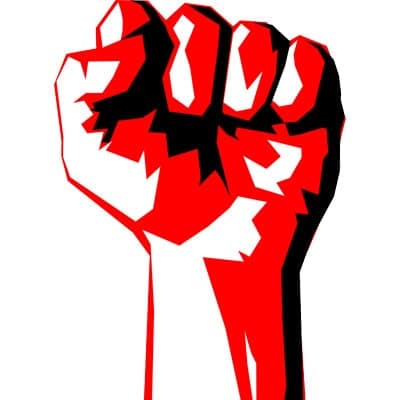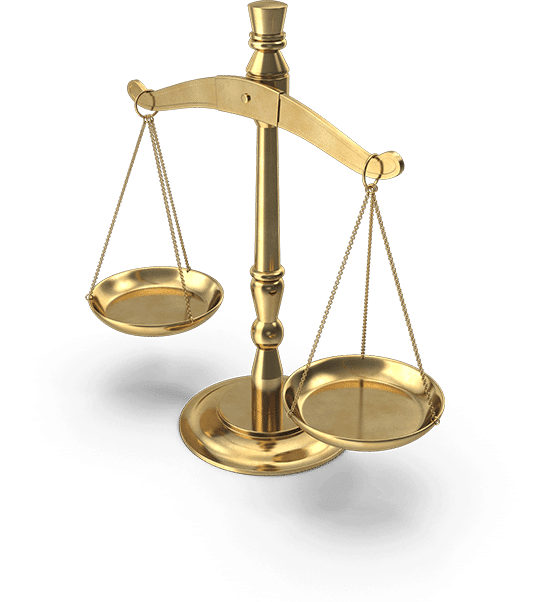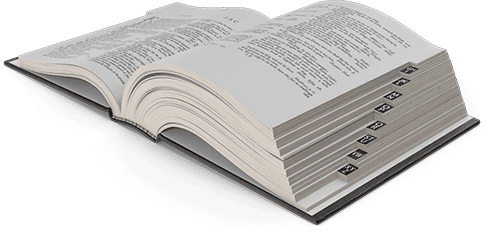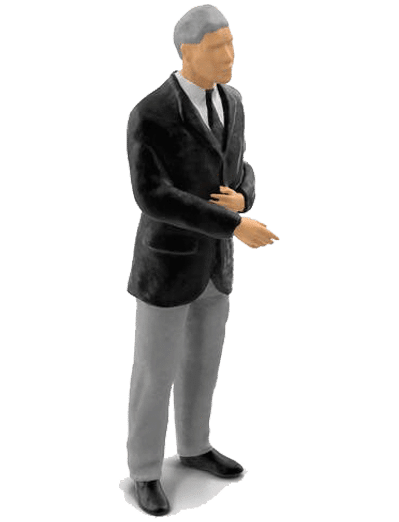Martial Law under the 1987 Constitution

Martial law
Adapted from a talk given at the Lyceum of the Philippines University in September 2011, at a symposium on the imposition of Martial Law in 1972.
The Nature of Martial Law
When we speak of history, we still tend to think of a narrative of events. But it is fascinating to also consider a history of ideas. The development of ideas has a narrative too. Ideas have a story.
For instance, consider the legal concept of martial rule.
We say that our Republic is governed by the rule of law. This means a government of laws, not of men. The rule of law requires our public officers to act within the limits of their legal authority. This means being subject to constitutional principles and restraints that preclude the arbitrary exercise of power. It is a cornerstone of our constitutional system of government.
Yet surviving within the very Constitution on which our faith in the rule of law is founded is a remarkable relic of power which seems to challenge the supremacy of law. This power is martial law or martial rule.
Our history has made us take as part of the natural legal order, as almost for granted, the President’s power to place the Philippines or any part of it under martial rule. It is a power which we have bound together with the President’s military power. We have retained it in every iteration of our Constitution.
But it is in many ways a power so inconsistent with our system of separate and balanced branches of government as to make its persistence striking. Because although the rule of law limits the normal exercise of governmental power through a code of written law, under a regime of martial law the scope of that power’s exercise is not fixed and is not written down. It is limited only by necessity.
Under our Constitution, the President can impose martial law on the ground of “invasion or rebellion, when public safety requires it.” Martial law, therefore, is to be invoked in those cases where the very existence of the State is threatened.
It is premised upon the principle that “the state has a right to defend itself” and rests on the proposition that “every state possesses the power of self-preservation.” Martial law has been characterized as “the public right of self-defense against a danger to the order or the existence of the state.”
Consider this with the words of the scholar Karl Jaspers, “We too easily forget the fundamental reality of force, although it is present to us daily, even though covertly. Force is inescapable … there is no human existence without the reality of force.” The reality of force is something we should never forget when speaking of martial law.
It is no mere parade when military power is called on and when martial law is invoked. When the President exercises his powers under martial law, when he calls on the men with the rifles and on the tanks, those rifles have bullets inside them and those tanks have explosive shells. Violence and physical restraints are part and parcel of the power that can be called upon.
Force may be called on and used to uphold the troubled civil order. This blunt aspect of martial law merits clear-eyed acknowledgment. For as the very old martial law case of Luther vs. Borden, decided in 1849, found:
“… unquestionably, a State may use its military power to put down an armed insurrection, too strong to be controlled by the civil authority. The power is essential to the existence of every government, essential to the preservation of order and free institutions, and is as necessary to the States of this Union as to any other government. The State itself must determine what degree of force the crisis demands. And if the government … deemed the armed opposition so formidable, and so ramified throughout the State, as to require the use of its military force and the declaration of martial law, we see no ground upon which this court can question its authority. It was a state of war; and the established government resorted to the rights and usages of war to maintain itself, and to overcome the unlawful opposition. And in that state of things the officers engaged in its military service “might lawfully arrest anyone, who, from the information before them, they had reasonable grounds to believe was engaged in the insurrection; and might order a house to be forcibly entered and searched, when there were reasonable grounds for supposing he might be there concealed. Without the power to do this, martial law and the military array of the government would be mere parade, and rather encourage attack than repell it.
In martial law, we contemplate the use of force to meet the needs of the moment. This force can be regulatory or destructive, covert or extreme. In actual operation, the only principle which restrains this force is the same that which authorizes it: necessity. No more force can be used than is necessary to accomplish the reason for its exercise, which is to meet the invasion or rebellion for the sake of public safety.
Because it deals with control for the sake of the public welfare, martial law has been recognized as an exercise of the inherent police power of the State, that power which promotes the public welfare by restraining and regulating the use of liberty and property, and which is normally exercised by the Legislative branch.
But, in the name of necessity, under martial law the Executive can exercise powers normally vested in the other branches of government. This shouts of its truly extraordinary nature. It is in this that martial rule is marked apart from the ordinary power of the President, as Commander-in-Chief, to call out and command the armed forces.
History and Practice
The above lay out the academic principles by which martial law has been defined. But they are somewhat abstract. There are other ways to come to grips with what martial law is, and one of the best is by examining the process through which the legal concept came about. And, also, the way it actually operates in practice.
These two aspects of martial law: First, how it came to be – which is to say its historical existence – and Second, how it is actually employed and conducted, can enlighten us on what is meant, here in the Philippines, when we speak of martial law.
First, we enter into legal history. We look at how the legal concept of martial law entered our system and how it developed.
Martial law, as we have it in the Philippines, is an American inheritance. The power to impose martial law has long been recognized in the American system of government and there are decided cases, old decided cases, where the American courts’ rulings on both the imposition and the conduct of martial law reverberate in Philippine law until today.
There is the celebrated 1866 case of Ex parte Milligan, arising from President Abraham Lincoln’s declaration and exercise of martial law during the American Civil War. Ex parte Milligan gave us some of our guiding principles with regard to martial rule’s relationship to civil authority.
Martial law does not supersede civil authority, but is called upon to aid the latter in the execution of its civil functions.
Ex parte Milligan tells us that:
If, in foreign invasion or civil war, the courts are actually closed, and it is impossible to administer criminal justice according to law, then, on the theatre of active military operations, where war really prevails, there is a necessity to furnish a substitute for the civil authority, thus overthrown, to preserve the safety of the army and society, and as no power is left but the military, it is allowed to govern by martial rule until the laws can have their free course. As necessity creates the rule, so it limits its duration, for, if this government is continued after the courts are reinstated, it is a gross usurpation of power. Martial rule can never exist where the courts are open and in the proper and unobstructed exercise of their jurisdiction. It is also confined to the locality of actual war. Because, during the late Rebellion, it could have been enforced in Virginia, where the national authority was overturned and the courts driven out, it does not follow that it should obtain in Indiana, where that authority was never disputed and justice was always administered. And so, in the case of a foreign invasion, martial rule may become a necessity in one state when, in another, it would be “mere lawless violence.”
The influence and language of this case would echo down the decades, across the sea and into Philippine law.
Consider: One of the reasons Ex parte Milligan had been so contentious in the United States was that, despite the recognition that a state of martial law could be imposed, the US Constitution was open to argument as to which authority in the Federal government the power to make the declaration rested, whether it be in the President or in Congress.
In deliberate contrast, when American rule was cemented upon the Philippines three score years later, it was made clear who had the legal authority to impose martial law. In the Philippine Autonomy Act of 1916, more familiar to us as the Jones Law, the power to declare martial law and to suspend the privilege of the writ of habeas corpus was explicitly vested on the highest executive officer in the islands, the American Governor General. The Jones Law provided outright that the Governor General could, “in case of rebellion or invasion, or imminent danger thereof, when the public safety requires it, suspend the privileges of the writ of habeas corpus, or place the Islands, or any part thereof, under martial law”.
The Jones Law provisions on martial law were transposed wholesale into the 1935 Constitution of the Philippines, and the power to impose martial law earlier possessed by the American Governor General was vested on the President of the Philippines. With, however, an important omission.
The grant of authority to declare martial law vested on the Governor General under the Jones Law had been restricted by the requirement that, whenever he would exercise this authority, he would at once notify the President of the United States, together with the attending facts and circumstances, and the President would have power to modify or vacate the action of the Governor-General. There was an oversight function, in the form of the American President, hanging over the Governor General’s remarkable power to proclaim martial law.
When the Philippine Commonwealth transitioned into the independent Republic, the Philippine President had no such overseeing authority. Under our chosen Constitution, the President’s decision to place the Philippines under martial law could not be subject to a higher power’s revision or annulment, nor by Congress nor the courts.
The 1935 Constitution’s provisions on martial law only read that:
“In case of invasion, insurrection, or rebellion, or imminent danger thereof, when the public safety requires it, he may suspend the privilege of the writ of habeas corpus, or place the Philippines or any part thereof under martial law.”
And it was under these provisions that President Ferdinand Marcos declared martial law through Proclamation No. 1081 on September 21, 1972. Thereafter, President Marcos removed from the civilian courts their authority to decide upon certain crimes and transferred jurisdiction over these crimes to military tribunals he himself had created.
Martial law was not formally lifted until January 17, 1981, through Proclamation No. 2045. Legal scholars have strongly contended that it continued even beyond that because President Marcos had by then also acquired legislative powers and, at its heart, martial law is the concentration of governmental powers in the hands of the Executive.
Following the 1986 EDSA Revolution, a new Constitution was put in place. The 1987 Constitution retains the grant of the power to declare martial law with the President, but it narrows the grounds for its imposition and gives to both Congress and to the Supreme Court the power to review and revoke the President’s proclamation.
The President’s power to declare martial law is now found in Section 18 of Article VII of our 1987 Constitution. There the Constitution states that,
“In case of invasion or rebellion, when the public safety requires it, he may, for a period not exceeding sixty days, suspend the privilege of the writ of habeas corpus or place the Philippines or any part thereof under martial law”.
From the outset, therefore, the power to declare martial law is hemmed about with restrictions and limitations. There are conditions which must be met before it can be imposed. Now the power is given to the President only when those conditions of actual invasion or rebellion (not merely imminent danger thereof) are met, and only when public safety requires it. What is more, the President can only impose martial law for a period of up to sixty days. Martial law can only extend beyond those sixty days by the joint vote of Congress. Congress, voting jointly, now has the authority to revoke the President’s proclamation of martial law.
Under our present Constitution, the President has the duty, within forty-eight hours of his proclamation of martial law, to submit to Congress a report on his proclamation in person or in writing. For its part, Congress has the duty to convene within twenty-four hours following the proclamation, and to deliberate on the proclamation. Congress will then decide on whether or not to revoke the proclamation and lift martial law.
Also under our Constitution, the Supreme Court is given unquestioned authority to review the sufficiency of the factual basis of the proclamation of martial law. Where the Marcos era Supreme Court shied away from asserting authority to strike down the President’s Proclamation, under the 1987 Constitution the Supreme Court is now given the express mandate to review such a proclamation. This means that the Supreme Court has the power to determine that there was insufficient factual basis for martial law and to strike it down. The Supreme Court can rule that there is no actual invasion or rebellion or that the public safety does not require martial law. Any citizen can file a case against the President’s declaration of martial law. To ensure that the question is resolved quickly, the Constitution requires that the Supreme Court must promulgate its decision within thirty days from the filing of the case.
In rejection of the practices and case law that developed around Marcos era martial law, the 1987 Constitution provides that a state of martial law does not suspend the operation of the Constitution, nor supplant the operation of the courts or of the legislature, nor deprive the courts of jurisdiction. We find here not only a rejection of the Marcos meaning of martial law, but a deliberate echo of the language of the Supreme Court of the United States’ ruling in Ex Parte Milligan.
There has been only one instance since the ratification of the 1987 Constitution when the new martial law provisions were put to the test.
On the morning of November 23, 2009, a convoy of six vehicles carrying about sixty people was on its way to register Esmael Mangudadatu’s candidacy for governor of Maguindanao province. Many of these people were journalists as well as the female relatives of Mangundadatu. The convoy was intercepted in the town of Ampatuan by about one hundred armed men, reportedly led by Datu Unsay mayor Datu Andal Ampatuan, Jr. and the Police Chief Inspector and concurrent PNP Deputy Provincial Director of the Maguindanao Police Provincial Office. The intercepted passengers were killed and their mutilated bodies — bearing the marks of torture — were soon found among mass graves in Ampatuan town.
On November 24, 2009, President Gloria Macapagal-Arroyo issued Proclamation No. 1946 declaring a state of emergency in the provinces of Maguindanao, Sultan Kudarat and the city of Cotabato, and calling out the Armed Forces of the Philippines to assist in the restoration and maintenance of peace and order in the affected areas.
Mayor Andal Ampatuan, Jr. was taken into custody on November 26, 2009 and criminal charges for multiple murder were filed against him.
On December 4, 2009, President Arroyo issued Proclamation No. 1959, “Proclaiming a State of Martial Law and Suspending the Privilege of the Writ of habeas Corpus in the Province of Maguindanao”, giving as ground that there were heavily armed groups in the province of Maguindanao which had established positions to resist government troops and were thereby depriving the Executive of its powers and prerogatives to enforce the laws of the land and to maintain public order and safety.
On December 6, 2009, in accordance with Section 18, Article VII of the 1987 Constitution, the President submitted to Congress her Report on Proclamation No. 1959. In her report, the President justified her imposition of martial law by alleging that a separatist group based in Maguindanao had joined forces with the formidable armed followers of the Ampatuans, thus depriving the President of her power to enforce the law and to maintain public order and safety.
The Report deftly alluded to the 1866 language of Ex Parte Milligan by making its case that the courts were actually closed, that it was impossible to administer justice according to law, and that civil authority had been thus overthrown:
Local government offices in Maguindanao refused to discharge their functions, which hindered the investigation and prosecution team from performing their tasks;
The Local Civil Registrar refused to accept the registration of death certificates of the victims purportedly upon the orders of Andal Ampatuan, Sr.;
The local judicial system had been crippled by the absence or non-appearance of judges of local courts in view of threats to their lives and safety thereby depriving the government of legal remedies in their prosecutorial responsibilities …
Duly verified information disclosed the Ampatuan group is behind the closing down of government offices, the refusal of local officials to discharge their functions and the simultaneous absence or non-appearance of judges in local courts.
The Report went on to detail accounts of rebel armed groups and their movements in Maguindanao, numbering in the thousands and consolidated by the Ampatuans, and the military’s recovery of massive stockpiles of illegal weapons and ammunition stores.
For its part, Congress duly convened in joint session to deliberate on whether or not to revoke Proclamation No. 1959. The deliberations went on for days. Congress interpellated the representatives of the Executive and of the military, the questions focusing on whether or not a rebellion truly was occurring and on the manner of the military and police conduct under martial law. It became apparent in these proceedings that the questions on the legality of the imposition and on the conduct of martial law involved successive yet nevertheless distinct issues.
It must also be said that, during this time there were protestations that President Arroyo had resorted to martial law for self-serving political reasons.
In the meantime, the Executive and the military continued to act under the aegis of martial law, making seizures of more weaponry and stockpiles and conducting warrantless searches and arrests.
But before Congress could come to a vote over the President’s Proclamation, the President herself lifted martial law in Maguindanao on December 12, 2009. Congress consequently adjourned its special session on the ground that the issue had become moot and academic.
A barrage of petitions had also been filed with the Supreme Court by various citizens who opposed the President’s imposition of martial law. These petitions were not resolved until March 2012 when a majority of the Supreme Court voted to dismiss the petitions for having been rendered moot and academic.
What it Means Now
The events surrounding Proclamation No. 1959 revealed that the new constitutional provisions concerning martial law to come into effect, but with practical limits. Despite the new restrictions, the powers entrusted to the Executive remain formidable.
Of necessity, it takes time for the Legislature to convene, to debate, to deliberate and to act. It takes even more time for the Supreme Court to do so. The wheels of formal and institutional safeguards turn slowly while events can continue to move very quickly on the ground as the Executive actually exercises martial law powers.
Despite the new restrictions in the Constitution, the political power that martial law offers is so great in potential and scope that there remains no better yoke on its employment than the faithfulness and goodwill of a President or, in its absence, the vigilance of the people to restrain the art of the possible.
See also: References for Martial Law under the 1987 Constitution






0 Comments
Trackbacks/Pingbacks